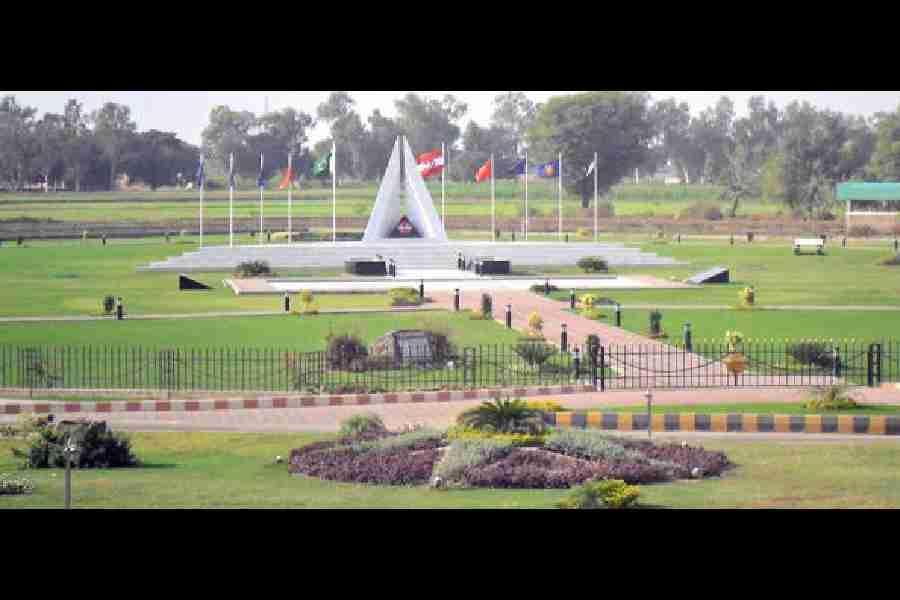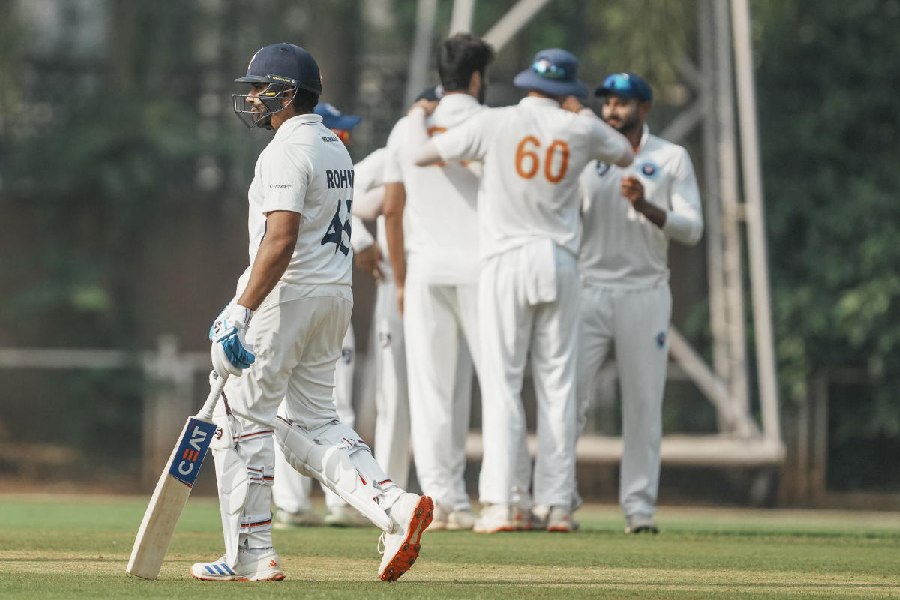Daughter to Rashid Ali Malik, a third-generation army man, Maria Rashid offers an exploration of a variety of matters involved in militarism. What strikes us most is the deep poignancy Rashid tries to capture and convey through her examinations of the stages of military life and its “affect”— a word she uses to convey the “more embodied, unformed… abiding… aspect of human feeling.”
The book is in nine chapters, beginning with the grand spectacle of the Yadgar-e-Shuhada (Martyrs’ Memorial, picture) and moving into a scrutinisation of national military commemorations. The third chapter, “The Land of the Valiant”, offers a look into the recruitment practices of the army, some of which, much like the tradition of the British Indian Army, are still concentrated in the famed martial district of Chakwal, Punjab. The subsequent chapters explore the relationship between the military and its recruits, their training and transformation from “soldier-peasant” to “soldier-subject”, deaths of soldiers and the reception of those deaths, the compensatory mechanism in place for the families of the dead, disability and quality of life post-war. After glossing over the war on terror and aspects of religion, Rashid concludes that an in-depth consideration of affective measures deployed by the military can serve as a powerful political act to confront the appeal of militarism.
The most engaging feature of the text is Rashid’s careful working of religiosity and the dichotomy of feminine and masculine into the processes of militarism. The grandiosity of the opening scene, with the emotional and the conflicting attitudes of mothers of shaheeds juxtaposed with the reflections on the soldier’s devotion, compels us to question the intent and the action of the military during their recruitment phase. Affect is employed as a technology of rule by the military to create its subjects. Commemorative programmes like the Martyrs’ Memorial are used by the military to control or invoke emotions like grief, fear, pride, and loyalty. Moreover, the military’s convincing portrayal of the “proper fighting soldier” as a masculine entity who is “hyperfit” and “mentally robust” allows for a smooth delineation of the qaum (nation) as feminine.
The Pakistani military maintains that recruitment remains a voluntary act. However, Rashid’s interviews with over hundreds of soldiers and their families belie such tall claims. Two pertinent reasons emerge through Rashid’s careful examinations of her subjects’ psyche. First, the repeated affirmation of devotion to the nation as a deeply religious act makes the esprit de corps a sacred profession concerned with the primordial notions of ghairat (honour) and izzat (prestige). The disabled, maimed or even escaped soldiers are emasculated, creating a continuum of shame that is unacceptable to most. Second, the attractions of secure careers and financial support for the families of soldiers make military professions lucrative to young men in the areas Rashid has concentrated upon for her research.
Dying to Serve is a sad revelation of the misplaced ideas of sacrifice and valour that are used as veils to cover more troubling truths affecting the politics of the military nation. Rashid expertly exposes the raw and glaring inconsistencies that mark the fractured ideas of nationhood projected and upheld by the practitioners of war. What remains at the end of our reading is not the glory but the pity of war.










